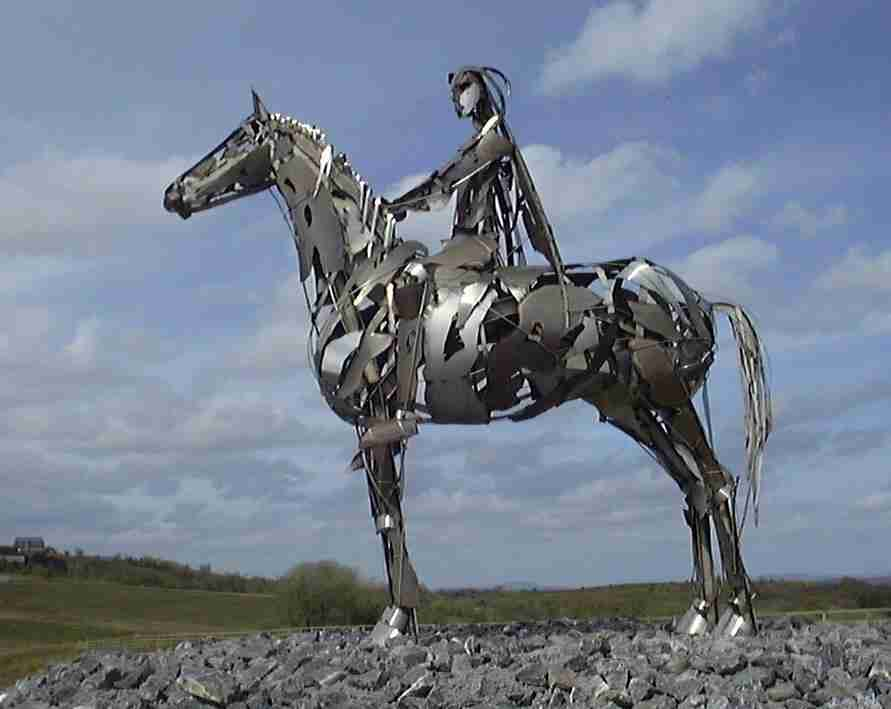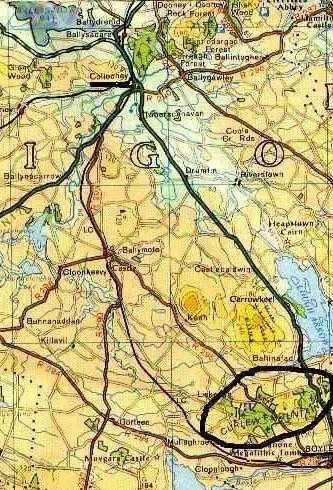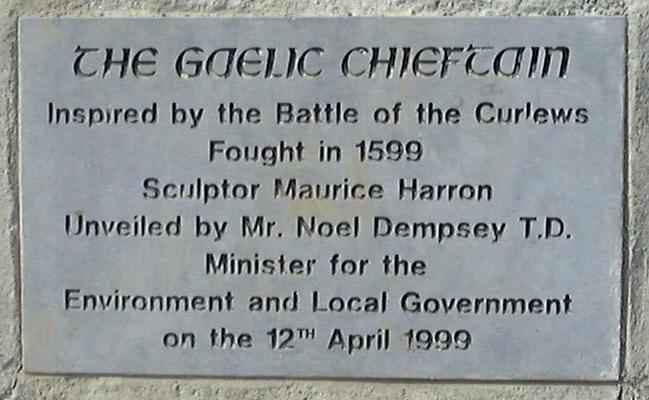
shown on the relief map.
 The O'Connors Sligo, a branch of the descendants of Turlough Mor were overlords of most of the County, including Collooney. When the McDonaghs branched out from the parent family of the l4th century, they settled in the baronies of Tirerrill and Corran, under the leadership of the O'Connors. In time they split into two branches, McDonagh of Ballymote, known as McDonagh of Corran, and McDonagh of Ballindoon, known as McDonagh of Tirerrill.
The O'Connors Sligo, a branch of the descendants of Turlough Mor were overlords of most of the County, including Collooney. When the McDonaghs branched out from the parent family of the l4th century, they settled in the baronies of Tirerrill and Corran, under the leadership of the O'Connors. In time they split into two branches, McDonagh of Ballymote, known as McDonagh of Corran, and McDonagh of Ballindoon, known as McDonagh of Tirerrill.

|
|
The rectangle indicates the area shown on the relief map. |


